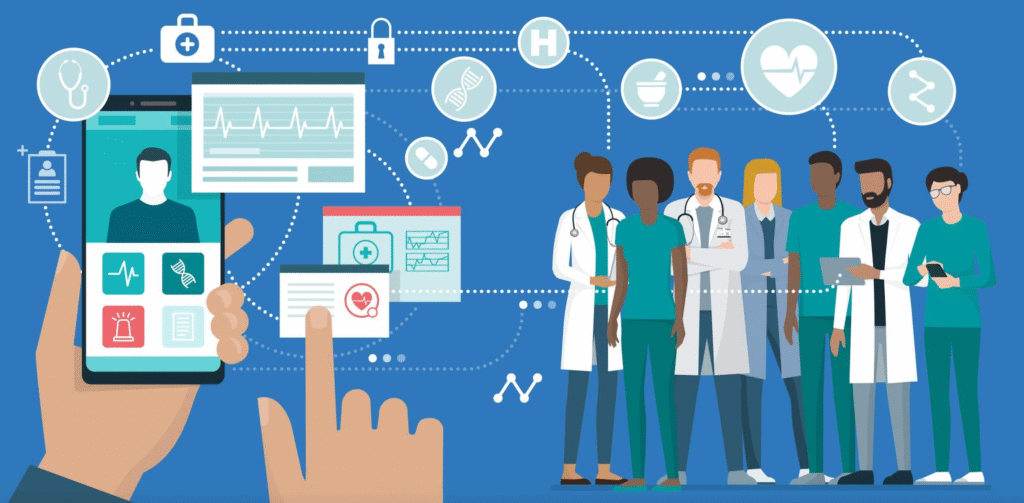A Dramatic Shift in U.S. Healthcare Policy
Lose Health Insurance In July 2025, the U.S. Senate narrowly passed President Donald Trump’s new legislative package, known as the “One Big Beautiful Bill Act.” While it aims to reform taxation and reduce federal spending, the bill introduces sweeping changes to the U.S. healthcare system. Experts warn it could lead to 17 million Americans losing their health insurance coverage over the next decade.
The bill combines permanent tax cuts with deep reductions to Medicaid and modifications to the Affordable Care Act (ACA), significantly affecting coverage for millions. This article explores the details of the bill, who will be impacted, and what it means for the future of American healthcare.
Understanding the Legislation
What Is the “One Big Beautiful Bill”?

The “One Big Beautiful Bill” is a large-scale legislative initiative spearheaded by President Trump. It combines tax reductions, budget cuts, and policy reforms, with a special focus on curbing federal spending in healthcare and social programs.
The bill’s key provisions include extending tax cuts introduced in 2017, introducing work requirements for welfare programs, cutting Medicaid funding, and reducing subsidies that make health insurance affordable for middle- and low-income Americans.
Goals of the Bill
- Permanently extend tax cuts for individuals and businesses
- Reduce federal expenditures by limiting healthcare and welfare spending
- Reform Medicaid through stricter eligibility and work requirements
- Reduce ACA support and streamline federal enrollment processes
How Will Americans Lose Coverage?
Medicaid Cuts and Restrictions
The bill proposes over $1 trillion in cuts to Medicaid, the joint federal and state program that provides health coverage to low-income individuals. These cuts are expected to directly affect eligibility, enrollment processes, and provider reimbursements.
New Work Requirements
One of the major changes is the reintroduction of work requirements. Adults under the age of 65 who are not pregnant or disabled must work, volunteer, or participate in job training for at least 80 hours a month to maintain Medicaid coverage. Failure to comply could result in immediate loss of benefits.
Stricter Eligibility Verification
The bill requires beneficiaries to verify eligibility twice a year instead of once, increasing the risk of coverage loss due to administrative issues or missed deadlines. This additional red tape is expected to cause millions to fall through the cracks, even if they still qualify under the rules.
Changes to the ACA Marketplace
The Affordable Care Act’s insurance marketplace will also see significant changes. The bill eliminates enhanced subsidies introduced during the pandemic and shortens the open enrollment period. Additionally, it removes automatic re-enrollment, requiring individuals to sign up each year manually.
These changes make it more difficult for individuals to maintain coverage, particularly those with limited access to technology or who face language barriers. Middle-income Americans, in particular, may find premiums unaffordable without subsidies, forcing them to drop coverage entirely.
Who Will Be Affected?
Low-Income Americans
Low-income individuals and families who rely on Medicaid for routine care, prescriptions, and emergency services will face the most severe consequences. Many will fail to meet the new work or documentation requirements, even if they’re technically eligible.
Elderly and Disabled Individuals
Although the bill does not cut Medicare, many seniors and disabled people rely on Medicaid to cover long-term care costs in nursing homes. With Medicaid cuts, these facilities may reduce services, limit admissions, or close altogether, leaving vulnerable populations with fewer options.
Women and Children
The bill introduces new restrictions on family planning clinics, barring them from receiving Medicaid reimbursements. This will disproportionately affect women’s health services, including prenatal care, contraception, and cancer screenings. Children in low-income households are also at risk of losing coverage and access to essential immunizations.
Rural Communities
Rural hospitals and clinics that heavily depend on Medicaid funding are at risk of closure or service reductions. These areas already suffer from limited healthcare access, and the proposed cuts could turn medical deserts into public health emergencies.
Impact on the Healthcare System

Increased Uninsured Rates
Healthcare experts estimate that the bill could result in 17 million additional uninsured Americans by 2034. This increase would reverse coverage gains made under the ACA and potentially push the uninsured rate back to pre-2010 levels.
Financial Strain on Hospitals
Hospitals, particularly non-profits and rural institutions, will face a significant increase in uncompensated care. Patients without insurance often rely on emergency departments for treatment, leading to overcrowding, higher costs, and financial instability for healthcare facilities.
Reduction in Preventive Care
Uninsured individuals are less likely to seek preventive care, such as cancer screenings or chronic disease management. Delayed diagnoses and untreated conditions can result in higher mortality rates and a greater financial burden on the healthcare system overall.
Decline in Public Health
Public health infrastructure could also suffer. With fewer people accessing routine care, the risk of infectious disease outbreaks and mental health crises increases. Communities may become more vulnerable to preventable health threats.
Economic Consequences
Rise in Medical Debt
As more people lose insurance, out-of-pocket expenses for healthcare will rise. This could lead to a sharp increase in medical debt, personal bankruptcies, and financial instability for millions of families.
Productivity Loss
Health problems can reduce workforce participation and productivity. Employers may experience higher absenteeism and lower job performance, particularly in industries that rely heavily on low-wage labor.
Job Losses in the Healthcare Sector
Cuts to Medicaid and insurance subsidies could lead to layoffs in hospitals, clinics, and nursing homes. Healthcare is one of the largest employment sectors in the U.S., and reductions in funding can have ripple effects across local economies.
Public and Political Response
Political Divisions
The bill passed in the Senate with a tie-breaking vote, reflecting deep partisan divisions. While Republican leaders praise it as a return to fiscal responsibility, many moderate and independent lawmakers have expressed concern about its impact on healthcare access.
Democrats unanimously opposed the bill and have vowed to fight its implementation. Several governors and state lawmakers are also exploring legal avenues to block or mitigate the law’s effects within their jurisdictions.
Public Opposition
Polling shows that a majority of Americans oppose the bill’s healthcare provisions. Grassroots organizations, patient advocacy groups, and unions have launched campaigns to educate the public and put pressure on lawmakers to reconsider the bill.
Protests have been organized in several major cities, with demonstrators highlighting the personal stories of those who could be affected by the legislation.
What Happens Next?
The bill has moved to the House of Representatives, where it is expected to face another tight vote. If passed there, it will head to the president’s desk for final approval. Opponents are preparing for legal challenges, and there may be last-minute amendments aimed at softening some of the bill’s harshest provisions.
Regardless of the outcome, the bill has ignited a national debate over the role of government in healthcare and the balance between fiscal conservatism and social responsibility.
Also Read : Isfahan Nuclear Site Untouched By Bunker-busters
Conclusion
The “One Big Beautiful Bill Act” marks one of the most significant overhauls of healthcare policy in recent U.S. history. By targeting Medicaid and reducing ACA support, it threatens to leave 17 million Americans without health insurance. The bill’s effects will be felt most by low-income families, seniors, women, and rural communities, who are already vulnerable under the current system.
While proponents argue that the bill promotes self-reliance and trims unnecessary spending, critics believe it will lead to poorer health outcomes, increased financial hardship, and deeper inequality. The long-term impact will depend not only on how the bill is implemented but also on the political and legal battles that lie ahead.
Americans now face a critical moment in shaping the future of healthcare—one that demands awareness, activism, and accountability from both citizens and their elected leaders.
FAQs
Q1: Who will lose health coverage under the bill?
The bill is expected to cause up to 17 million Americans to lose coverage. This includes individuals on Medicaid and those who purchase insurance through the ACA marketplace.
Q2: What are the new Medicaid work requirements?
Adults under 65 who are not pregnant or disabled must work, volunteer, or participate in training for at least 80 hours per month to remain eligible for Medicaid.
Q3: How does the bill affect the ACA?
The bill reduces subsidies and shortens enrollment periods, making it harder for individuals and families to afford or maintain ACA marketplace coverage.
Q4: Will this affect Medicare?
While Medicare is not directly cut, some automatic federal budget rules triggered by the bill may reduce Medicare funding in the coming years.
Q5: What happens to rural hospitals?
Rural hospitals may lose a significant portion of their funding due to Medicaid cuts. This could result in service reductions, closures, or job losses.




